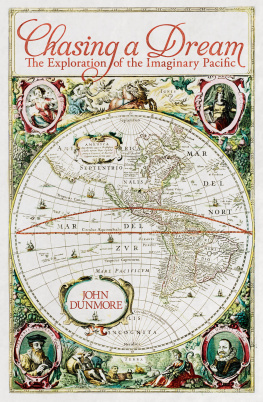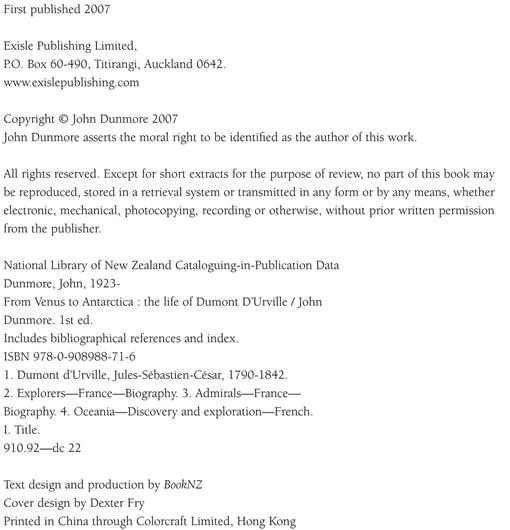John Dunmore - From Venus to Antarctica: The life of Dumont dUrville
Here you can read online John Dunmore - From Venus to Antarctica: The life of Dumont dUrville full text of the book (entire story) in english for free. Download pdf and epub, get meaning, cover and reviews about this ebook. year: 2007, publisher: Exisle Publishing Pty Ltd, genre: Detective and thriller. Description of the work, (preface) as well as reviews are available. Best literature library LitArk.com created for fans of good reading and offers a wide selection of genres:
Romance novel
Science fiction
Adventure
Detective
Science
History
Home and family
Prose
Art
Politics
Computer
Non-fiction
Religion
Business
Children
Humor
Choose a favorite category and find really read worthwhile books. Enjoy immersion in the world of imagination, feel the emotions of the characters or learn something new for yourself, make an fascinating discovery.

- Book:From Venus to Antarctica: The life of Dumont dUrville
- Author:
- Publisher:Exisle Publishing Pty Ltd
- Genre:
- Year:2007
- Rating:5 / 5
- Favourites:Add to favourites
- Your mark:
From Venus to Antarctica: The life of Dumont dUrville: summary, description and annotation
We offer to read an annotation, description, summary or preface (depends on what the author of the book "From Venus to Antarctica: The life of Dumont dUrville" wrote himself). If you haven't found the necessary information about the book — write in the comments, we will try to find it.
High adventure, drama, discovery, science and map making. This is the first-ever full-length English language biography of DUrville one of the nineteenth centurys great explorers.Bad-tempered and irreverent, DUrville was loved by his men but hated by his superiors. He didnt care either way. His passion for science drove him forward as he explored the Pacific from Guam to Antarctica and from New Guinea to Chile, collecting a vast number of natural history specimens and recording extensive hydrographical information. Hobart was frequently a base and DUrville is credited with making the single greatest contribution to perfecting the map of the Pacific. He was not consumed with French colonial arrogance, often preferring the societies he visited to his own. He was however given the prestigious French Legion of Honour. He is often remembered for arranging the purchase of the famous statue Venus De Milo (whose arms were broken off in the battle to get her to Paris). His life ended in a railway accident in 1842. The author, John Dunmore, is the indisputable world authority on French explorers. Now based in Wellington, Dunmore has over 20 books to his credit and the highest literary award the French can give.High adventure, drama, discovery, science and map making. This is the first-ever full-length English language biography of DUrville one of the nineteenth centurys great explorers.Bad-tempered and irreverent, DUrville was loved by his men but hated by his superiors. He didnt care either way. His passion for science drove him forward as he explored the Pacific from Guam to Antarctica and from New Guinea to Chile, collecting a vast number of natural history specimens and recording extensive hydrographical information. Hobart was frequently a base and DUrville is credited with making the single greatest contribution to perfecting the map of the Pacific. He was not consumed with French colonial arrogance, often preferring the societies he visited to his own. He was however given the prestigious French Legion of Honour. He is often remembered for arranging the purchase of the famous statue Venus De Milo (whose arms were broken off in the battle to get her to Paris). His life ended in a railway accident in 1842. The author, John Dunmore, is the indisputable world authority on French explorers. Now based in Wellington, Dunmore has over 20 books to his credit and the highest literary award the French can give.
John Dunmore: author's other books
Who wrote From Venus to Antarctica: The life of Dumont dUrville? Find out the surname, the name of the author of the book and a list of all author's works by series.








